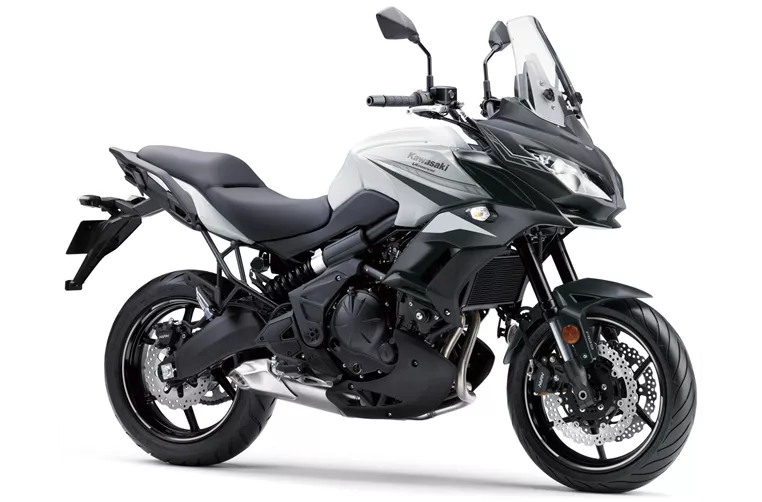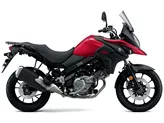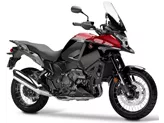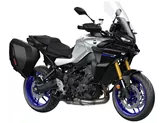Kawasaki Versys 1000 2015 vs. Kawasaki Versys 650 2020

Kawasaki Versys 1000 2015

Kawasaki Versys 650 2020
Overview - Kawasaki Versys 1000 2015 vs Kawasaki Versys 650 2020
The Kawasaki Versys 1000 2015 and the Kawasaki Versys 650 2020 are both enduro motorcycles with their own unique set of features and specifications.
Starting with the engine and drive train, the Versys 1000 2015 is equipped with an in-line four-cylinder engine with a displacement of 1043ccm, producing 120 horsepower and 102 Nm of torque. On the other hand, the Versys 650 2020 has a smaller in-line two-cylinder engine with a displacement of 649ccm, producing 69 horsepower and 64 Nm of torque. The Versys 1000 2015 has a more powerful engine compared to the Versys 650 2020.
In terms of suspension, both models feature upside-down telescopic forks in the front. However, the Versys 1000 2015 offers more adjustment options with compression, preload, and rebound adjustments, while the Versys 650 2020 only has rebound adjustment. This gives the Versys 1000 2015 an advantage in terms of suspension customization.
When it comes to the chassis, the Versys 1000 2015 has an aluminum frame, which provides stability and durability. On the other hand, the Versys 650 2020 has a steel frame, which may not be as lightweight or rigid as the aluminum frame of the Versys 1000 2015.

Kawasaki Versys 1000 2015
Both models are equipped with double disk brakes in the front, providing reliable stopping power. The Versys 1000 2015 and the Versys 650 2020 have 17-inch wheels, but the Versys 1000 2015 has a wider rear tire with a width of 180mm compared to the 160mm rear tire of the Versys 650 2020.
In terms of dimensions and weights, the Versys 1000 2015 has a longer wheelbase of 1520mm compared to the 1415mm wheelbase of the Versys 650 2020. Both models have the same seat height of 840mm. The Versys 1000 2015 is slightly heavier with a kerb weight of 250kg compared to the 216kg kerb weight of the Versys 650 2020. Both models have a fuel tank capacity of 21 liters.
Moving on to the strengths of each model, the Versys 1000 2015 has a sporty look and a comfortable seating position. Its in-line four-cylinder engine is powerful and refined, providing a thrilling riding experience. The adjustable windshield allows for customization based on the rider's preferences. The stable chassis and well-controlled braking system ensure a confident ride. Additionally, the Versys 1000 2015 offers a clever range of accessories and comes at a comparatively low price.
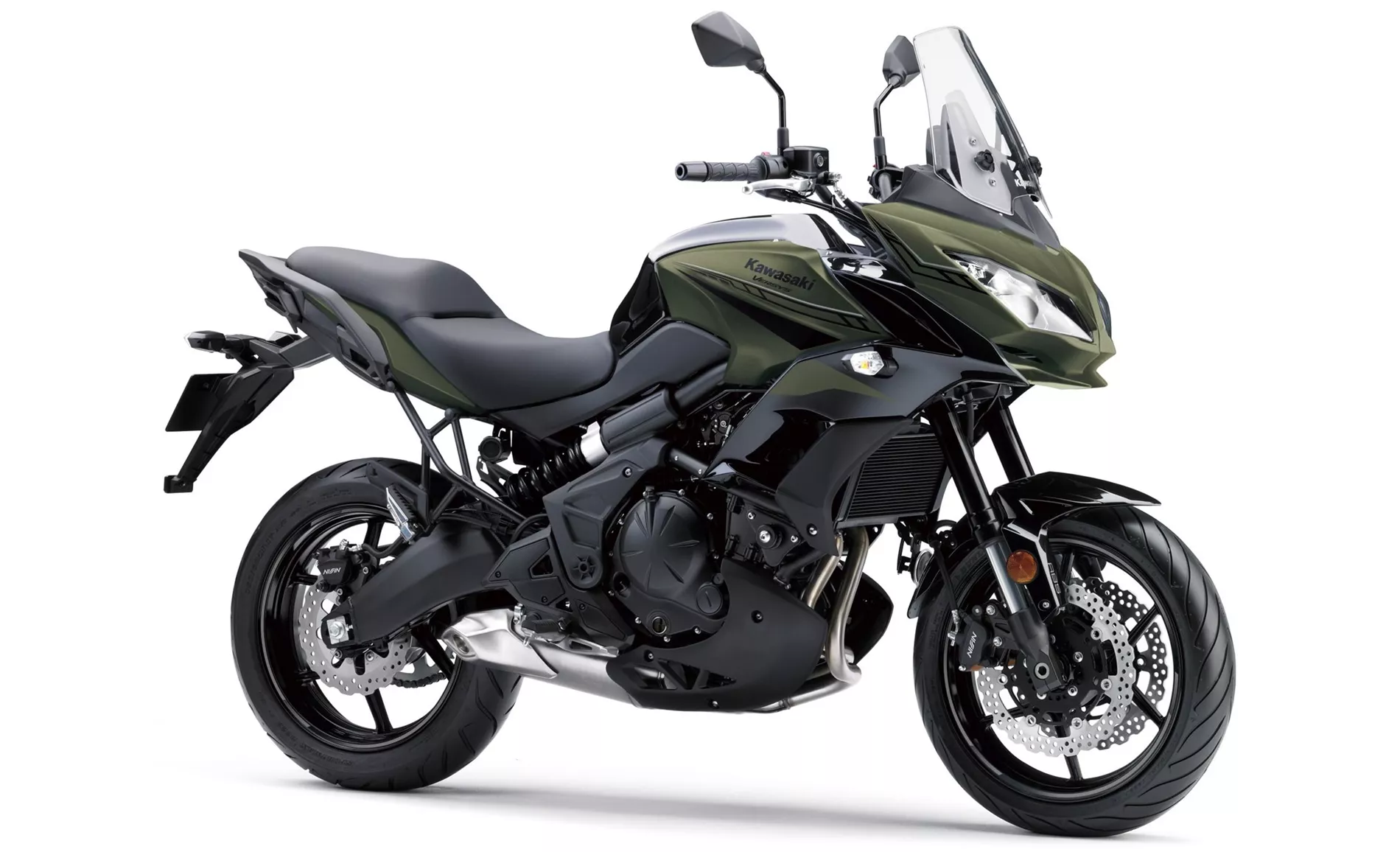
Kawasaki Versys 650 2020
On the other hand, the Versys 650 2020 excels in travel comfort, thanks to its pleasant and comfortable chassis. The easy-to-use nature of the bike makes it suitable for riders of all levels. The seating position is ready for touring, providing long-distance comfort. The agile and light-footed handling of the Versys 650 2020 makes it a joy to ride.
In terms of weaknesses, the Versys 1000 2015 has a windshield that can only be adjusted when stationary, which may be inconvenient for some riders. Additionally, the gear indicator is not included as standard and costs extra.
The Versys 650 2020 has some weaknesses as well. Vibrations can be felt in the footpegs, which may cause discomfort during long rides. The response behavior during the transition from pushing to load operation may not be as smooth as desired. The ABS cannot be deactivated, which may limit the control for some riders. Lastly, the weight of the Versys 650 2020 is somewhat high compared to other models in its class.
In conclusion, the Kawasaki Versys 1000 2015 and the Kawasaki Versys 650 2020 are both capable enduro motorcycles with their own set of strengths and weaknesses. The Versys 1000 2015 offers a more powerful engine and a wider range of adjustment options, while the Versys 650 2020 excels in travel comfort and agility. Ultimately, the choice between the two models depends on the rider's preferences and intended use of the motorcycle.
Technical Specifications Kawasaki Versys 1000 2015 compared to Kawasaki Versys 650 2020
Pros and Cons in comparison
Pros and Cons in comparison
Kawasaki Versys 1000 2015

The new Kawasaki Versys 1000 is not a completely new model - even if it looks like one from the design point of view. The look has been cleverly adapted to the current aggressive Kawasaki line with two pointed headlights and many edges at the front. Technically, on the other hand, it has been cautiously upgraded - but quite sensibly. Two additional horsepower boost the output to 120 hp, which is excellent to ride thanks to the wonderful in-line four-cylinder characteristics. The chassis corresponds to the sporty demands of a Kawasaki, but the ergonomics and comfortable seating position allow for long journeys - just like a big enduro. With useful accessories such as a pannier set, top case, heated grips and additional headlights, the Versys 1000 becomes a serious long-distance tourer - the comparatively low base price makes these gimmicks quite affordable.
Kawasaki Versys 650 2020

The 2019 model year Kawasaki Versys presented itself as a comfortable, stable yet lively touring machine. The motorbike is versatile and offers high utility value. It is a fully-fledged touring machine that is a pleasure to ride on extended tours. The bike offers a terrific price/performance ratio.
Price Comparison Avarage Market Price Kawasaki Versys 1000 vs Kawasaki Versys 650
There are a few key differences between a Kawasaki Versys 1000 2015 and a Kawasaki Versys 650 2020. In terms of price, the actual average price of a Kawasaki Versys 1000 2015 is about 25% higher. Compared to Kawasaki Versys 650 2020 there are less Kawasaki Versys 1000 2015 bikes available on the 1000PS.de Marketplace, specifically 6 compared to 11. It takes less time to sell a Kawasaki Versys 1000 with 86 days compared to 137 days for a Kawasaki Versys 650. Since model year 2012 1000PS.de editors have written 19 reviews for the Kawasaki Versys 1000 and 39 reviews for the Kawasaki Versys 650 since model year 2007. The first review for the Kawasaki Versys 1000 was published on 11/7/2011 and now has more than 8,400 views. This compares to more than 3,900 views for the first review on Kawasaki Versys 650 published on 7/25/2006.

